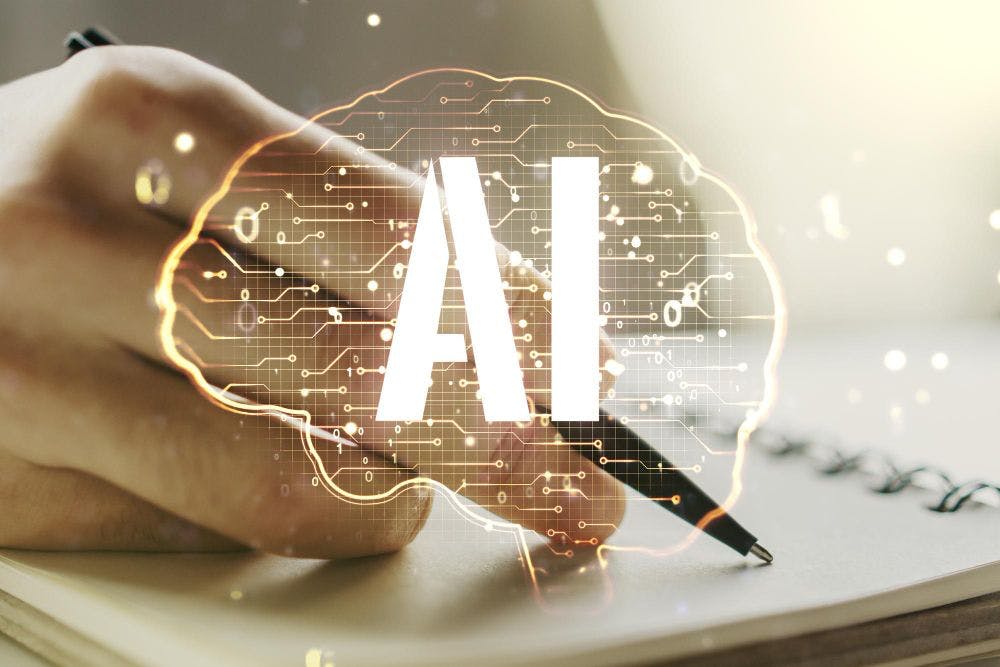As technology continues to play a crucial role in the advancement of almost every field, it shouldn’t be surprising to find education on the list. Educators across the globe are beginning to incorporate Artificial Intelligence (AI) into the classroom at nearly every grade level. It shapes how we learn and teach, making the learning experience more engaging, personalized, and efficient.
As a disclosure, this article includes links to my parent company BYJU’S – one of the world’s foremost education technology companies that provides engaging and personalized learning programs to more than 150 million students worldwide.
Lomit Patel
Investments in edtech worldwide hit a new high of $16.1 billion in 2020, with AI-powered edtech solutions ranking among the top investment targets, according to a report by HolonIQ. Investors noted interest in AI-powered edtech solutions that can help personalize learning, automate administrative chores, and enhance student outcomes.
The impact, however, is more than just big business. With teachers working an average odf on top of the growing teacher shortage, 20 to 40 percent of current teacher hours (or nearly 13 hours per week) could be automated or streamlined using technology, according to McKinsey & Company. That means more time to support student learning and less time on paperwork.
While the list of benefits of AI in education is long, here are three benefits with examples of how AI disrupts the way educators teach in the classroom.
Personalized Learning
Personalized learning has long been a foundational part of education. AI’s power makes building and tailoring a learning experience for specific students’ needs even more accessible. Data collected by educators can be fed into AI-powered platforms to help determine a student’s learning requirements, such as learning pace, preferences, strengths, and weaknesses. Teachers can develop lesson plans and find resources.
AI-powered platforms can provide students with personalized feedback, assisting them in identifying areas for development. An AI-powered platform can evaluate an individual student’s performance on an assignment or test and provide real-time feedback to identify better areas where they may need to concentrate their studies more. This also facilitates better conversations with instructors or parents to identify other factors affecting their studies.
By using machine learning and AI, the BYJU’S app is diving deep into the learning needs of every individual student. Changing what is offered and updating recommendations is integral to customizing the learning process. Based on what is being taught in schools at a particular point, BYJU’S creates modules for specific concepts and topics to ensure students don’t feel limited while learning. So depending on how well a student can understand a concept or how he or she is faring in a subject, the recommendations will keep changing until a child can apply the concept and grasp the outcome.
Enhanced Learning Experience
Technology has already transformed students’ learning experiences through fun, educational gamified learning experiences. Students, for example, can learn to code by making or modifying their video games through platforms such as Tynker to create a more interactive and entertaining educational experience.
Through the power of AI, these already engaging learning experiences can become more personalized by recommending additional resources based on a student’s hobbies and learning style. If a student is interested in astronomy, an AI-powered platform can suggest other resources, such as articles, videos, or interactive simulations, to keep them motivated and involved.
Another significant advantage of artificial intelligence in education technology is its ability to provide a more immersive learning experience. Different types of technology combined with artificial intelligence can give interactive simulations that enable students to experience real-world situations, such as a virtual field trip to a historical site or a science lab experiment. This immersive learning experience can help students comprehend complex concepts and make learning more memorable.
Data-Driven Insights
Teachers can obtain valuable insights into their student’s learning behaviors using data. AI-powered platforms can provide teachers with more opportunities to evaluate a student’s performance, learning habits, and interests to provide the best learning experience. This personalized strategy can help students overcome learning difficulties.
Platforms with AI capabilities can also collect data on the efficiency of different teaching methods and techniques. By examining the information collected from various students, teachers can identify trends and patterns in their classes and make data-driven decisions about their instructional approaches. This data-driven strategy to education enables teachers to adapt lesson plans to meet their students’ unique needs better, improving learning outcomes and academic performance.
Examples of AI in the Classroom
Although there isn’t a robot in the room with the students, AI can be incorporated into the various tools and software teachers already use to create new possibilities for learning and growth. Some examples include:
Adaptive Learning Platforms: These AI-powered tools evaluate students’ learning levels and customize classes to suit their needs. Some examples are Dreambox, Knewton, and Carnegie Learning.
Intelligent Tutoring Systems: These tools use AI to give students individualized feedback and direction as they work through issues and learn new material. Some examples are Carnegie Learning, ALEKS, and Knewton.
Virtual Learning Assistants: These AI-powered assistants respond quickly to questions from students providing them with instant help and feedback. Examples of such tools include IBM Watson Assistant and Adaface.
Chatbots: Chatbots such as ChatGPT can provide support outside of the classroom, such as answering questions about homework assignments, giving feedback on pronunciation and grammar, and even be programmed to help students learn a new language.
Natural Language Processing (NLP): NLP is used to study and understand human language, supporting the development of chatbots, voice assistants, and other AI-powered user interfaces that can have natural-language conversations with students. Some examples of NLP-powered tools are Duolingo, Grammarly, and LanguageTool.
Speech Recognition: Speech recognition technologies help assess students’ pronunciation and fluency, providing them with feedback on how to improve. Some examples include Language Learning with Netflix, Rosetta Stone, and Google Speech Recognition.
Predictive Analytics: These AI-powered tools help teachers intervene and assist students as needed by analyzing student data and forecasting performance. Some examples of predictive analytics tools are Edmentum, BrightBytes, and Skyward.
Sentiment Analysis: Sentiment analysis tools examine the tone of student comments to gauge how satisfied they are with any individual learning experience. Some examples of sentiment analysis tools are IBM Watson, RapidMiner, and Alteryx.
Learning Analytics: These tools analyze data from various sources to provide insights into student learning patterns, preferences, and behaviors. Some examples of learning analytics tools are Blackboard, Brightspace, and Canvas.
Building and Learning with AI
Student learning has significantly benefited from AI, but they can also learn how this technology works. Everything is becoming “smarter” these days, from smart TVs to even smart cars, so there are more chances for students to learn smarter while exploring potential new interests or future career paths.
Also published on HACKERNOON





